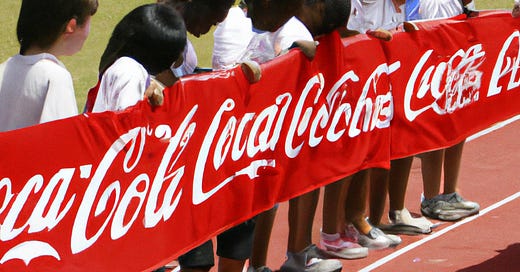Earlier this week the WSJ wrote about the challenges brands are having sponsoring college athletes.
The first problem is that company’s are unsure of what the rules are:
…many [brands] are treading cautiously… A Supreme Court decision in June 2021 broke the National Collegiate Athletic Association’s vise-grip on compensation for student athletes, but didn’t directly address the issue of endorsements. So far, that gap has been filled by a gamut of state laws. Which has left marketers to weigh the marketing potential of an untapped army of youthful influencers against the multifarious risks of a still-evolving arena, executives and observers say.
Most pointedly, the absence of federal law regulating NIL deals has created a policy patchwork that varies by state and institution, creating confusion about what brands and athletes can expect. Some universities, for instance, forbid students from wearing their uniforms or school colors in marketing materials.
The second challenge, is that the companies have no “playbook” on how to work with the young athletes. No one has done it before, so it’s not a mater of “best practice”, instead they need to figure things out for the first time:
Access to athletes remains the largest hurdle for national advertisers, who have no clear road map like those established by professional players’ unions, according to Casey Schwab, chief executive and founding partner at advisory firm Altius Sports Partners, which helps schools manage their athletes’ promotional activities.
“What they’re saying to us is … ‘How do we get to the athletes, because they don’t have agents? Do we call compliance at these schools? Do we call the parents? Do we DM them on Twitter?’” Mr. Schwab said.
This second challenge is true of any new channel. The type of marketer or executive who can run an existing business is very different from one who can figure out a new business - or in this case a new marketing channel. The latter is much harder to find!
New channels tend to have highly variable ROI. A channel like paid search will, in 2023, result is pretty consistent payback. But a new channel may have terrible negative ROI, or ROI that is 10x better than your next best channel. The reason is that the channel has not yet been optimized by the market. There are no $20 bills lying on the ground in paid search waiting to be picked up, but there might be in college athlete sponsorships (It doesn’t mean there will be. Many (if not most) new channels end up being terrible and a waste of time and effort. But sometimes they are be a gold mine).
In a few years college athlete sponsorships will be optimized. There will be a playbook. Companies will know if it makes sense in for their business to play in the channel (and how to best do it). The channel can be run by one of the many competent managers that run the rest of the business. But for now, and likely for another year or two, this channel will be for the managers who don’t have the patience to run the business on a day-to-day basis.
Keep it simple,
Edward



